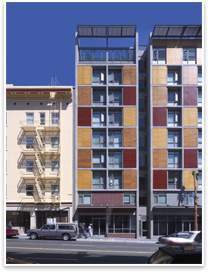
Building Commissioning Allows Testing for Sustainability Summary: When a building works properly, it uses less energy and provides a better environment for occupants. Building commissioning offers a way for architects to ensure that the sustainable systems they have programmed are working as designed. The goal of commissioning is to provide a more efficient building with fewer problems for the building owner and the best indoor environment for the occupants. Building commissioning should first be considered by the owner and the architectural/engineering team in the schematic design phase.
Washington’s commissioning program helps carry out the mission of an executive order that requires government agencies to look at the U.S. Green Building Council LEED®-Silver requirements for all new construction projects, says Roger Wigfield, an energy systems manager and manager of Washington State’s building commissioning program. Commissioning is a LEED point toward certification. What are the costs and benefits? Building commissioning for a new building ranges from the low side of about 75 cents/square foot to a high of $2.50/square foot, depending on the types of systems being commissioned and the complexity of the building. For complex buildings, such as prisons with door actuators and a lot of electronic controls, the cost tends to be higher. For a school with a VAV system, the costs would be lower, probably closer to the $1.25/square foot, Wigfield estimates.
“The benefits to the private sector are the same as to the public sector except the public sector is a little more willing to look at the longer payback items,” Wigfield says. What architects should know
Wigfield advises: “Commissioning isn’t the thing that happens during the last two weeks during functional testing. It’s a process that starts in the schematic design or even earlier and goes clear through construction and the warrantee period, so if there are issues they can be identified and straightened out.”
|
||
Copyright 2006 The American Institute of Architects. All rights reserved. Home Page |
||
news headlines
practice
business
design
recent related
› Beautiful, Green, and Affordable
› Commissioning of Facility Management
Washington State’s Building Commissioning Web site offers information on the state’s commissioning program, success stories, resources, an overview of building commissioning, and links to studies on the cost effectiveness of building commissioning.
Caption: The Plaza Apartments, an award-winning affordable-housing project by Leddy Maytum Stacy Architects, both in San Francisco, is going through the commissioning process so the architects can learn from this sustainable building, the first in the city’s efforts to set a new standard for affordable housing in San Francisco.


 To control costs, Wigfield says the owner can decide to test only some systems, such as ones that have been problematic in prior projects, or to test a sampling of building systems. From there, the team can decide if the further testing needs to be carried out.
To control costs, Wigfield says the owner can decide to test only some systems, such as ones that have been problematic in prior projects, or to test a sampling of building systems. From there, the team can decide if the further testing needs to be carried out. Wigfield says he typically works with an independent commissioning agent separate from the architects or engineer. “Typically the architecture firms don’t have the engineering or technical staff to do the actual commissioning. It could be something they want to add sometime, but the firms that I’m familiar with right now don’t have that capability.”
Wigfield says he typically works with an independent commissioning agent separate from the architects or engineer. “Typically the architecture firms don’t have the engineering or technical staff to do the actual commissioning. It could be something they want to add sometime, but the firms that I’m familiar with right now don’t have that capability.”